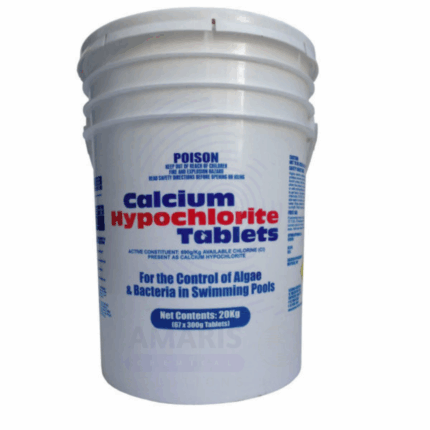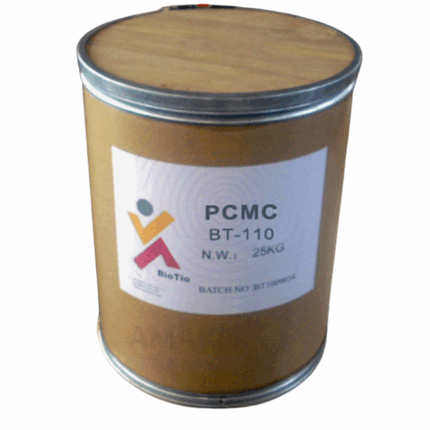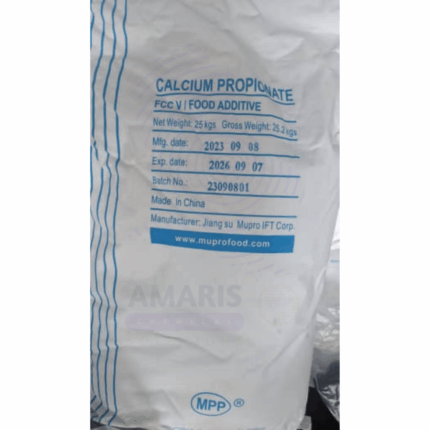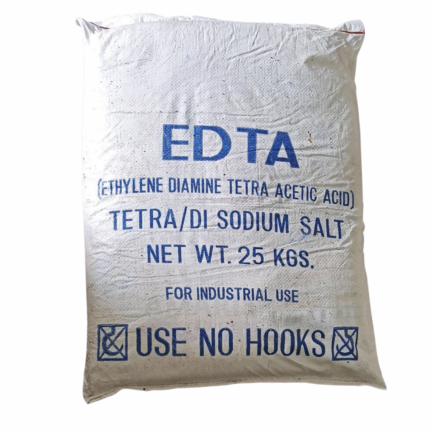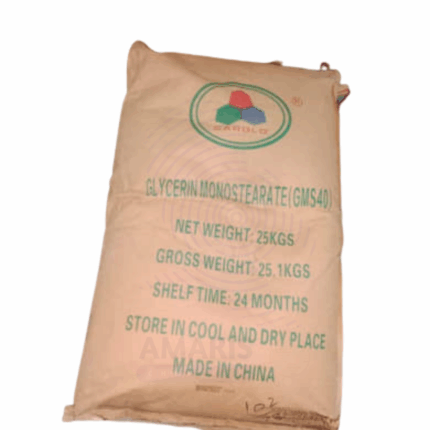Chlorobutanol BP
Chlorobutanol BP (also known as 1,1,1-Trichloro-2-methyl-2-propanol) is a white crystalline solid or powder, with a slight camphor-like odor and a bitter taste. It is a multifunctional preservative, anesthetic, and antimicrobial agent commonly used in pharmaceutical, cosmetic, and personal care products. Chlorobutanol exhibits bacteriostatic and fungistatic properties, making it effective in preventing microbial contamination in aqueous formulations. It also possesses mild local anesthetic effects, frequently used in ophthalmic and injectable preparations as a preservative and stabilizer.
Chlorobutanol BP
Primary Uses
Pharmaceuticals
- Used as a preservative in injectable formulations, ophthalmic solutions, and other sterile products to prevent bacterial and fungal growth.
- Acts as a local anesthetic in topical and ophthalmic applications to reduce pain and irritation.
- Employed in cough syrups and nasal sprays for its antimicrobial and preservative properties.
Cosmetics & Personal Care
- Incorporated in skin creams, lotions, and eye drops as a preservative to enhance shelf life.
- Used in formulations requiring antimicrobial protection without strong odors or irritation.
Secondary Uses
Laboratory & Research
- Utilized as a standard chemical reagent for analytical and pharmaceutical research.
Veterinary Medicine
- Applied as a preservative and anesthetic agent in veterinary injectables and topical formulations.
- Basic Identification Attributes
- Chemical Name (IUPAC): 1,1,1-Trichloro-2-methyl-2-propanol
- Common/Trade Name: Chlorobutanol BP
- CAS Number: 75-36-5
- HS Code: 2933.59.90
- Molecular Formula: C4H6Cl3O
- Synonyms:
- Chlorobutanol
- Trichlorbutanol
- Trichloro-tert-butyl alcohol
- Physical & Chemical Properties
- Physical State: Solid crystalline powder
- Color & Odor: White to off-white; mild camphor-like odor
- Melting Point: 69–72°C
- Boiling Point: Decomposes before boiling
- Density: 1.59 g/cm³ at 20°C
- Solubility: Slightly soluble in water (~0.55% at 20°C); freely soluble in alcohol, ether, chloroform
- Stability: Stable under normal conditions; sensitive to heat and light
- Safety & Hazard Attributes
- Hazard Class (GHS): Harmful if swallowed or inhaled; irritant to skin and eyes
- NFPA Ratings:
- Health: 2
- Flammability: 1
- Reactivity: 1
- Exposure Limits: No specific occupational exposure limit established; avoid inhalation and skin contact
- Toxicity: Moderate toxicity; may cause irritation to mucous membranes and skin
- Reactivity: Stable under normal conditions; avoid strong oxidizers
- Storage & Handling Attributes
- Storage Conditions: Store in a cool, dry, well-ventilated area away from heat, sparks, and direct sunlight
- Container Type: Sealed amber glass bottles or plastic containers resistant to chemical attack
- Shelf Life: Up to 3 years if stored properly
- Special Handling: Use gloves, goggles, and protective clothing; handle in well-ventilated areas
- Regulatory & Compliance Attributes
- Pharmacopoeial Status: Complies with British Pharmacopoeia (BP) standards
- FDA Status: Approved for use as a preservative in pharmaceutical formulations
- REACH Status: Registered under EU regulations
- Transportation: Not classified as hazardous for transport under normal conditions
- Waste Disposal: Dispose according to local environmental regulations; avoid environmental release
- Environmental & Health Impact
- Ecotoxicity: Low to moderate toxicity to aquatic life; avoid environmental discharge
- Persistence: Degrades slowly in the environment
- Bioaccumulation: Not expected to bioaccumulate significantly
- Carcinogenicity/Mutagenicity: Not classified as carcinogenic or mutagenic
Biodegradability: Moderate biodegradability under aerobic conditions
-
Safety Handling Precautions
- PPE: Chemical-resistant gloves, safety goggles, lab coat, and respiratory protection if dust or vapors are present
- Handling: Avoid inhalation, ingestion, and contact with skin and eyes
- Storage: Keep container tightly closed and away from incompatible materials
- Hygiene: Wash hands thoroughly after handling; do not eat, drink, or smoke in the work area
First Aid Measures
- Inhalation: Move victim to fresh air; seek medical attention if symptoms persist
- Skin Contact: Wash affected area with plenty of water; remove contaminated clothing; seek medical advice if irritation develops
- Eye Contact: Rinse immediately with plenty of water for at least 15 minutes; seek medical attention
- Ingestion: Rinse mouth; do not induce vomiting; seek immediate medical attention
Firefighting Measures
- Fire Hazards: Combustible under fire conditions; may release toxic gases such as hydrogen chloride and carbon monoxide
- Extinguishing Media: Use water spray, foam, dry chemical, or CO₂ extinguishers
- Special Precautions: Firefighters should wear full protective gear and self-contained breathing apparatus
Decomposition Products: Hydrogen chloride, carbon monoxide, carbon dioxide, and other toxic fumes


 Preservatives(food)
Preservatives(food) Flavor Enhancers
Flavor Enhancers Acidulants
Acidulants Sweeteners
Sweeteners Antioxidants
Antioxidants Colorants(food)
Colorants(food) Nutraceutical Ingredients (food)
Nutraceutical Ingredients (food) Nutrient Supplements
Nutrient Supplements Emulsifiers
Emulsifiers
 Collectors
Collectors Dust Suppressants
Dust Suppressants Explosives and Blasting Agents
Explosives and Blasting Agents Flocculants and Coagulants
Flocculants and Coagulants Frothers
Frothers Leaching Agents
Leaching Agents pH Modifiers
pH Modifiers Precious Metal Extraction Agents
Precious Metal Extraction Agents
 Antioxidants(plastic)
Antioxidants(plastic) Colorants (Pigments, Dyes)
Colorants (Pigments, Dyes) Fillers and Reinforcements
Fillers and Reinforcements Flame Retardants
Flame Retardants Monomers
Monomers Plasticizers
Plasticizers Polymerization Initiators
Polymerization Initiators Stabilizers (UV, Heat)
Stabilizers (UV, Heat)
 Antifoaming Agents
Antifoaming Agents Chelating Agents
Chelating Agents Coagulants and Flocculants
Coagulants and Flocculants Corrosion Inhibitors
Corrosion Inhibitors Disinfectants and Biocides
Disinfectants and Biocides Oxidizing Agents
Oxidizing Agents pH Adjusters
pH Adjusters Scale Inhibitors( water)
Scale Inhibitors( water)
 Antioxidants(cosmetic)
Antioxidants(cosmetic) Emollients
Emollients Fragrances and Essential Oils
Fragrances and Essential Oils Humectants
Humectants Preservatives
Preservatives Surfactants(cosmetic)
Surfactants(cosmetic) Thickeners
Thickeners UV Filters
UV Filters
 Fertilizers
Fertilizers Soil Conditioners
Soil Conditioners Plant Growth Regulators
Plant Growth Regulators Animal Feed Additives
Animal Feed Additives Biostimulants
Biostimulants Pesticides (Herbicides, Insecticides, Fungicides)
Pesticides (Herbicides, Insecticides, Fungicides)
 Active Pharmaceutical Ingredients (APIs)
Active Pharmaceutical Ingredients (APIs) Excipients
Excipients Solvents(pharmaceutical)
Solvents(pharmaceutical) Antibiotics
Antibiotics Antiseptics and Disinfectants
Antiseptics and Disinfectants Vaccine Adjuvants
Vaccine Adjuvants Nutraceutical Ingredients (pharmaceutical)
Nutraceutical Ingredients (pharmaceutical) Analgesics & Antipyretics
Analgesics & Antipyretics
 Analytical Reagents
Analytical Reagents Solvents(lab)
Solvents(lab) Chromatography Chemicals
Chromatography Chemicals Spectroscopy Reagents
Spectroscopy Reagents microbiology-and-cell-culture-reagents
microbiology-and-cell-culture-reagents Molecular Biology Reagents
Molecular Biology Reagents Biochemical Reagents
Biochemical Reagents Inorganic and Organic Standards
Inorganic and Organic Standards Laboratory Safety Chemicals
Laboratory Safety Chemicals Specialty Laboratory Chemicals(Special Laboratory Equipment)
Specialty Laboratory Chemicals(Special Laboratory Equipment)
 Demulsifiers
Demulsifiers Hydraulic Fracturing Fluids
Hydraulic Fracturing Fluids Scale Inhibitors(oil)
Scale Inhibitors(oil) Surfactants(oil)
Surfactants(oil) Drilling Fluids
Drilling Fluids
 Dyes and Pigments
Dyes and Pigments Bleaching Agents
Bleaching Agents Softening Agents
Softening Agents Finishing Agents
Finishing Agents Antistatic Agents
Antistatic Agents
 Admixtures
Admixtures Waterproofing Agents
Waterproofing Agents Sealants and Adhesives
Sealants and Adhesives Curing Compounds
Curing Compounds Concrete Repair Chemicals
Concrete Repair Chemicals Anti-Corrosion Coatings
Anti-Corrosion Coatings
 Surfactants(cleaning)
Surfactants(cleaning) Builders
Builders Enzymes
Enzymes Solvents (Cleaning)
Solvents (Cleaning) Fragrances
Fragrances
 Electronic Chemicals
Electronic Chemicals Catalysts
Catalysts Lubricants
Lubricants Photographic Chemicals
Photographic Chemicals Refrigerants
Refrigerants Automotive chemicals
Automotive chemicals Pyrotechnic Chemicals
Pyrotechnic Chemicals
 Biodegradable Surfactants
Biodegradable Surfactants Bio-based Solvents
Bio-based Solvents Renewable Polymers
Renewable Polymers Carbon Capture Chemicals
Carbon Capture Chemicals Wastewater Treatment Chemicals
Wastewater Treatment Chemicals
 Pigments
Pigments Solvents(paint)
Solvents(paint) Specialty Coatings
Specialty Coatings Binders/Resins
Binders/Resins Additives
Additives Driers
Driers Anti-Corrosion Agents
Anti-Corrosion Agents Functional Coatings
Functional Coatings Application-Specific Coatings
Application-Specific Coatings
 Fresh Herbs
Fresh Herbs Ground Spices
Ground Spices Whole Spices
Whole Spices Spice Blends
Spice Blends Dried Herbs
Dried Herbs
 Leavening Agents
Leavening Agents Dough Conditioners
Dough Conditioners Flour Treatments
Flour Treatments Fat Replacers
Fat Replacers Decoratives
Decoratives Preservatives(baking)
Preservatives(baking)
 Plasticizers & Softeners
Plasticizers & Softeners Reinforcing Agents
Reinforcing Agents Adhesion Promoters
Adhesion Promoters Vulcanizing Agents
Vulcanizing Agents Antidegradants
Antidegradants Blowing Agents
Blowing Agents Fillers & Extenders
Fillers & Extenders Accelerators & Retarders
Accelerators & Retarders
